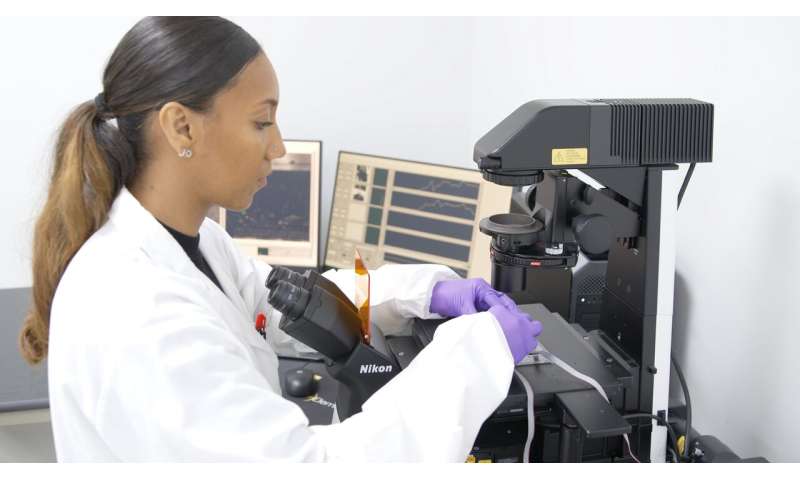
A new study published today demonstrates that a technology developed at the University of Central Florida could serve as a more reliable clinically-based model of amyotrophic lateral sclerosis (ALS) and a better screening tool for novel therapies than currently use preclinical models.
The Human-on-a-Chip technology was developed by UCF Professor James J. Hickman in his Hybrid Systems Lab at UCF. It has been licensed to Hesperos, Inc., a company founded by Hickman and Michael L. Shuler, Ph.D.
“This study supports the ability of our Human-on-a-Chip system to more accurately and rapidly assess new treatments for ALS, and potentially speed up the overall drug development process,” says Hickman, co-author of the paper, titled “A Human-Based Functional NMJ System for Personalized ALS Modeling and Drug Testing,” published in the journal Advanced Therapeutics . “This is also the first data to demonstrate the efficacy of the Deanna protocol for the treatment of ALS, utilizing a clinically relevant assay system.”
ALS is a progressive disease that damages nerves and over time causes the loss of muscle control and eventual death. Between 12,000-15,000 people in the nation are diagnosed with ALS with about 5,000 new cases every year, according to the Centers for Disease Control and Prevention. Also known as Lou Gerhig’s disease, there is no cure.
In the new journal article, researchers from UCF and Cornell University describe a functional neuromuscular junction (NMJ) disease model comprising motoneurons derived from induced pluripotent stem cells (iPSCs) of ALS patients and wild type primary human muscle fibers housed in a compartmentalized chambered system. Most importantly, the functional system was able to reproduce assays used in the clinic to assess ALS deficits where a patient is given a task to do with increased speed to detect spasticity or loss of muscle strength. This was reproduced by stimulating the motoneurons at increasing frequency and monitoring the muscle to record “skips” as well as accelerated fatigue.
The iPSCs were derived from three separate ALS lines, two expressing SOD1 mutations and one expressing the FUS mutation. Compared to healthy controls, each of the three cell lines of ALS motoneurons exhibited mutant-specific pathological phenotypes at varying degrees of severity, including increased axonal varicosities, reduced axon branching and elongation, and increased excitability.
When ALS motoneurons were incubated in the dual chamber system with muscle tissue, functional NMJs were formed without cell death from axons transported through tiny tunnels to the muscle chamber. However, there were significant impairments in NMJ formation, electrical activity transmission, and muscle contraction with increasing stimulation frequency. These data suggest that the system is a valid model that recapitulates the morphological and functional deficits in ALS.
“To our knowledge, this is the first study to demonstrate that while different ALS mutations display various phenotypes, all have the common point-of-origin deficit at the NMJ for each mutation, which is useful for not only the familial form of the disease but potentially sporadic as well” said Hickman.
The Deanna protocol is a regimen of holistic, supplements that contains five components targeting various cellular mechanisms known to be pathologically altered in ALS and this over-the-counter ALS treatment is commercially available. While this strategy has been anecdotally reported to successfully treat ALS, there was previously no scientific evidence in a human functional model that support its therapeutic use.
In the study, upon treatment with the Deanna protocol the NMJ functional deficits were reversed. Specifically, treatment led to significant improvements in NMJ formation, electrical activity transmission and muscle contractions, even at higher frequencies of stimulation.
Source: Read Full Article



